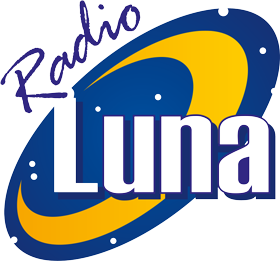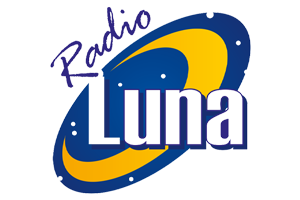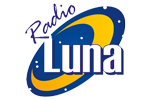Most traders use the RSI to track price trends and to see whether a stock is overbought or oversold. When the RSI is high – usually interpreted as the index crossing above 70 – it can signal that the stock is overbought. Technical trading features like overbought and oversold provide plenty of helpful hints but should be part of a comprehensive process. Bollinger Bands – these are bands that are plotted one standard deviation above and one standard deviation below a security’s exponential moving average.
What is the Relative Strength Indicator (RSI)?
When this is the case, traders refer to the asset as overbought and many will bet on a reversal in price. While the relative strength index is calculated based on average gains and losses, stochastics compares the current price level to its range over a given period of time. Stocks tend to close near their highs in an uptrend and near lows in a downtrend. Therefore, price action that moves further from these extremes toward the middle of the range is interpreted as an exhaustion of trend momentum.
Price Action and Trends
Importantly, it can signal when stocks are overbought or oversold, which provides information about whether it is prudent to open or close a position. To determine an oversold condition, investors will use both fundamental and technical analysis. Some fundamental metrics that will be used include the price-to-earnings (P/E) ratio, earnings reports and a company’s balance sheet. Some traders use pricing channels like Bollinger Bands to spot overbought areas. On a chart, Bollinger Bands are positioned at a multiple of a stock’s standard deviation above and below an exponential moving average.
How to find profitable trades with the RSI Scanner
Analysts that identify a stock with a high RSI and a price that is edging toward the high end of its upper Bollinger Band will likely consider it to be overbought. Note that overbought and oversold readings aren’t guaranteed to precede price trend reversals. Many traders make the mistake of buying oversold stocks or selling overbought stocks and suffer financial losses as a result. This often happens when traders are unaware of the proper analytical tool to use. RSI is a commonly used indicator for measuring a stock’s momentum and identifying overbought and oversold conditions. By creating an RSI screener with Scanz, you can quickly find stocks that are trending and have room left to run as well as stocks that may be ripe for a reversal.
The higher the RSI, the stronger and more protracted the bullish trend. A long and aggressive downtrend, on the other hand, results in an RSI that progressively moves toward zero. If markets were completely efficient, stocks would likely reverse course long before they entered overbought or oversold https://www.1investing.in/ territory as rational investors took profits. But when a stock makes a parabolic move (especially to the upside), it’s hard for investors to separate emotional thinking from careful investment planning. Overbought means excessive optimism is setting in; likewise, pessimism with oversold securities.
- You may not be willing to buy a stock that is filing for bankruptcy – technical analysis may consider it as the most oversold after a strong decline.
- For example commodities, such as gold and silver, don’t generate income so by cash flow models, they have no intrinsic value.
- In addition, changing the timeframe of the RSI can change the magnitude of the index by bringing in more low-volatility or high-volatility trading days from more than 14 days ago.
- The relative strength index (RSI) is an extremely popular technical indicator that measures a stock’s momentum.
- The greater the magnitude of the bullish days, the higher the RSI will be; the greater the magnitude of the bearish days, the lower the RSI will be.
- Finally, Bollinger Bands demonstrate an oversold stock when the price pierces the lower bound line.
When a stock is in a downtrend, sellers will outnumber buyers meaning the index will show more lows than highs. However, investors should be less concerned about a company’s individual number and more concerned about how its number compares to other companies in its sector. They may also look at it compared to a benchmark index or with companies that have a similar market capitalization (market cap). A stock that is trading significantly lower than others in its sector may indicate that the stock is oversold. When you’re looking at bullish trends, you’re always looking at the lows (orange line). Between price action and indicator, you are always looking at what it is doing to the lows.
Both the relative strength index and stochastics have strengths and weaknesses, and the indicators are best used in combination with other tools designed to establish optimal buy and sell points. Lastly, there are times when a stock, commodity, or market can stay overbought or oversold for a considerable time period before a reversal. Therefore, overbought or oversold signals from RSI or stochastics can sometimes prove premature in strong trending markets.
One of the simplest uses of RSI is to find stocks that are trading with momentum. Bullish momentum should lead to a consistently rising RSI, since the number and magnitude of bullish intervals going into the calculation will exceed the number and magnitude of bearish intervals. Conversely, bearish momentum should lead to a consistently falling RSI.
The oversold stocks screener to select the stocks that have the strongest oversold signals. This stock scanner is for the strongest oversold stocks – this stock filter is based on volume and money flow technical analysis. A list of stocks that are “oversold” according to the Relative Strength Index (RSI), which is an overbought and oversold stocks screener indicator often used in technical analysis. An RSI of under 30 on a daily chart is generally used to determine that an asset is oversold and indicates that the stock may soon bounce back from the oversold conditions. We should use multiple technical indicators and chart patterns to generate a buy and sell signal.
These reversals are some of the easiest, most reliable gains in the entire crypto trading world. What our screener does is highlights interesting price actions and shows you when a reversal might be coming. It’s not 100% guaranteed to happen – nothing ever is – but it just points it out and says “hey you, look here. This saves you from having to constantly research and monitor the market looking for interesting price action (which could take hours and hours).
Here’s how you can use our RSI scanner and PAS to identify interesting trades. In this example, we saw that there was a pullback and that forms our support. You can set your stop-loss a little below the support level, buy the dips, and sell when the price goes up. This will save you a lot of time because you’ll be able to easily identify trades that offer potentially profitable opportunities.
They will also look at earnings reports that help describe the inner workings of a company including a review of their balance sheet for capital flows and debt levels. Overbought and oversold stocks are characterized by steep and abrupt price movements, with significant gains or losses occurring in brief periods. The charts of these stocks are easy to identify; the price action is practically vertical, and the volume is mostly going in one direction. Overbought and oversold conditions aren’t just lines on technical indicators. Market sentiment and investor psychology also play a prominent role in sustaining price pressure until stocks reach a saturation point. Here are 2 factors to consider when looking for overbought or oversold reversals.
RSI is expressed as a ratio of the average upward movement to the average downward movement of a stock over a specific period of time, typically 14 days. The RSI attempts to reveal how committed buyers and sellers are to their positions. Since RSIs with different timeframes respond differently to recent price movements, you can compare two RSI values to see if a stock has short-term bullish or bearish momentum. If the short-term RSI is greater than the long-term RSI, it indicates that bullish momentum is increasing in recent intervals. If the short-term RSI is less than the long-term RSI, bearish momentum is picking up.
You buy a stock when it has been oversold because it is undervalued and the stock will rally on a price bounce. When a stock is overbought, you sell it straight away because a pullback will occur. RSI levels of 80 or above are considered overbought, as this indicates an especially long run of successively higher prices. Earnings Reports – While these can technically be considered news events, earnings reports are generally seen as an event unto themselves.
Let’s look at another example, CPNG, which was another oversold stock recently. Click the link below and we’ll send you MarketBeat’s list of seven stocks and why their long-term outlooks are very promising. MarketBeat keeps track of Wall Street’s top-rated and best performing research analysts and the stocks they recommend to their clients on a daily basis.
The best part about RSI screeners is that they are easily customizable, so you can tailor your scan to fit your trading strategy or incorporate other technical indicators. Two of the most common charting indicators of overbought or oversold conditions are relative strength index (RSI) and stochastics. Welles Wilder Jr. and introduced in the 1978 book “New Concepts in Technical Trading Systems,” RSI is a measurement of stock price change momentum. Moving Average Convergence/Divergence Oscillator (MACD) – The moving average convergence/ divergence oscillator shows the relationship between two exponential moving averages (EMAs). The most common moving averages used are the 26-day moving average as the longer average and the 12-day moving average as the shorter average.
Overbought is a term used when a security is believed to be trading at a level above its intrinsic or fair value. Overbought generally describes recent or short-term movement in the price of the security, and reflects an expectation that the market will correct the price in the near future. This belief is often the result of technical analysis of the security’s price history, but fundamentals may also be employed.
Technical analysts will look at technical indicators that will help them confirm an oversold condition. One of the most common of these is the Relative Strength Indicator (RSI). Stocks often enter overbought or oversold territory during volatile periods like the Great Recession or the 2020 COVID crash. In fact, the same stock can waver from overbought to oversold in a relatively brief period when markets are uncertain.
The strongest oversold stocks list is based on technical analysis price and volume data over the past six month.You should not confuse oversold and undervalued stocks. Oversold stocks are defined by technical analysis and undervalued (underpriced) stocks are defined by fundamental analysis. A fundamental analyst refers to an undervalued stock when by fundamental data the analysts considers that this stock’s actual value is higher than the stock’s current market price. A decline in selling Supply when buying Demand remains the same (or icreasing) may lead to a trend reversal up.An “Oversold” is not a signal to buy. It is a condition when a stocks is predisposed to reverse its price trend up. You may not be willing to buy a stock that is filing for bankruptcy – technical analysis may consider it as the most oversold after a strong decline.








